 Back to selection
Back to selection
Notable Tech in 2024
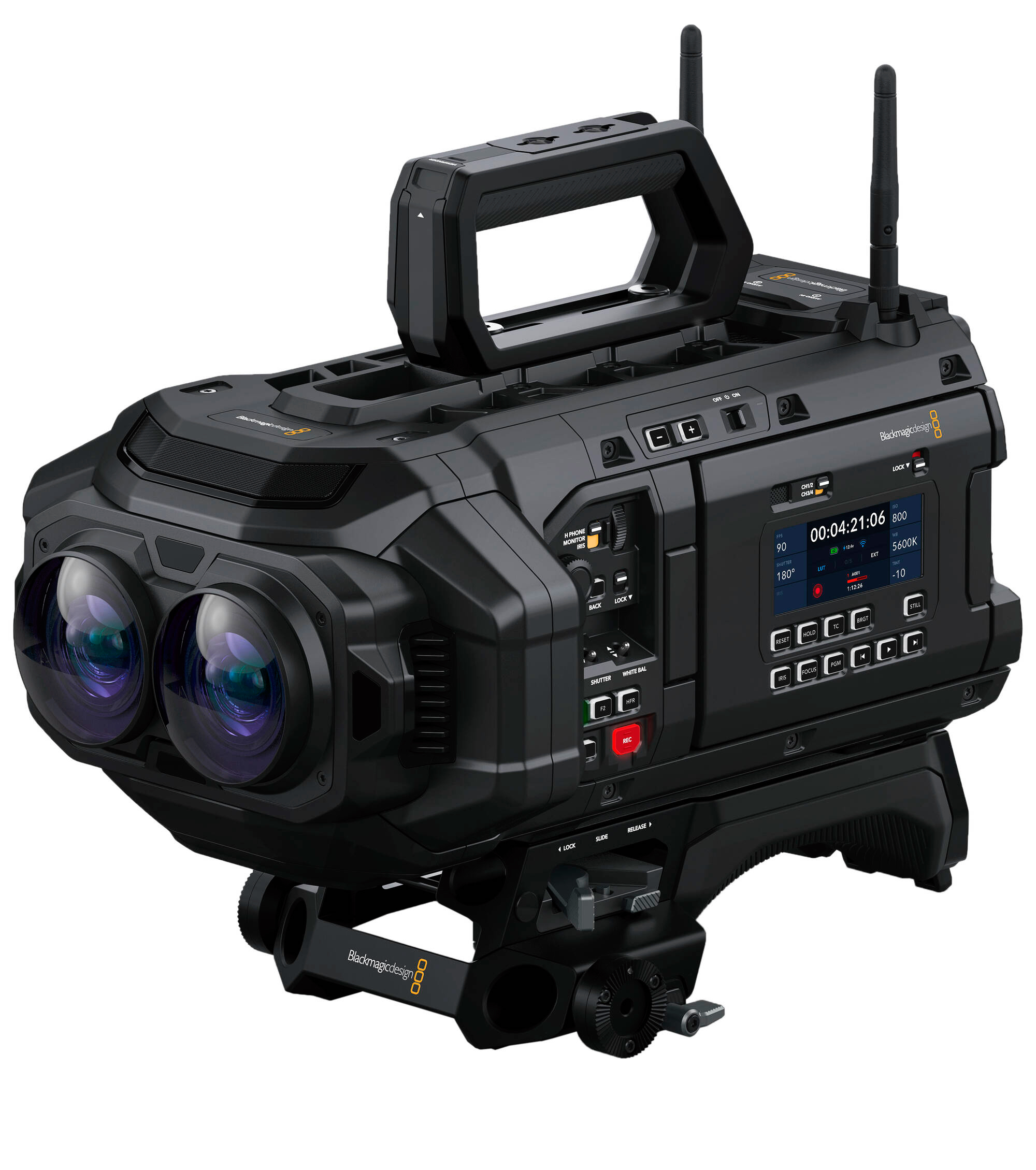 Blackmagic Design Ursa Cine Immersive created for Apple immersive
Blackmagic Design Ursa Cine Immersive created for Apple immersive Innovation in cameras, lenses, lighting, batteries, and more pressed onward in 2024, despite production doldrums and pain points across the industry. These advances arrive at a time when all the world walks around with a capable 4K video camera in their pockets, when a youngest generation pivots to vertical videos from social media. While the future of the film business as we knew it may seem cloudy, the steadily rising quality and capability of low-cost gear does continue to lift all boats.
Below are brief notes on some of the tech standouts of 2024. Let’s hope that ginned-up xenophobia—manufactured panics over drones, politicians vowing inciteful tariffs—doesn’t burn down the very trade agreements and supply chains that make all such progress possible.
CAMERAS
Certain mirrorless 4K video cameras, which lead a double life as still cameras pressed to the eye, tick all the boxes when it comes to premium video features. Panasonic this year introduced their latest video-centric Micro Four Thirds camera, the Lumix GH7, which boasts hybrid phase- and contrast-detection autofocus, internal 5.7K ProRes RAW HQ recording, and 4-channel 32-bit float audio recording (with use of an optional audio adapter). For image stabilization, the GH7 provides both electronic stabilization (by enlarging the image) and 5-axis “in-body” gyroscopic control of the sensor (IBIS), which compensates for up/down, right/left, pitch, yaw, and roll.
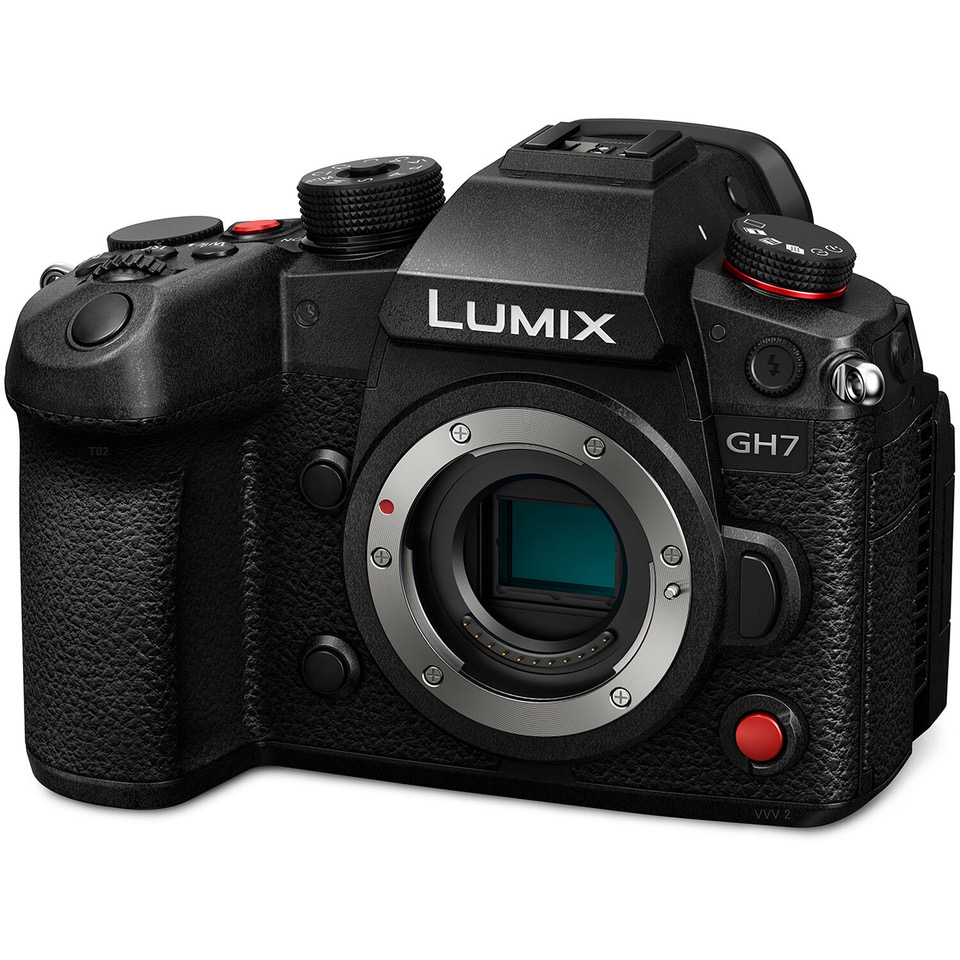
The GH7 is remarkably LUT-friendly, enabling it to add “looks” or to mimic other cameras. A paid upgrade permits image capture in ARRI LogC3, which invites use of ARRI LUTs as well. Like most new cameras these days, the Lumix GH7 supports streaming over wireless protocols (RTMP, RTMPS) or wired (RTP, RTSP). Similarly, it supports Wi-Fi “camera-to-cloud” uploading of proxy video clips in real time to cloud-based collaborative platforms like Frame.io.
While the GH7 epitomizes lightness and compactness, its smaller Micro Four Thirds sensor is an outlier when it comes to 2024’s other dominant trend in camera design: bigger sensors.
Canon introduced two new 6K cameras with full-frame sensors, both trail-blazing in that they part ways with Canon’s classic EF lens mount and instead embrace Canon’s RF mirrorless mount. Already in 2020 Canon had dipped its toe in this water with the advent of the C70, a mirrorless 4K S35 cinema camera with an RF mount. In fact, Canon’s new C80 is basically a C70 bumped up to 6K full-frame, while the new C400 can be seen as a 5.9K C500 Mark II likewise bumped up to 6K full-frame.
The C400 body is noticeably shorter than the C500 Mark II because mirrorless lens mounts like RF are significantly shallower. In an EF mount, for instance, the “flange focal distance” between the surface of the lens mount and the sensor is 44mm, while an RF mount is only 20mm—a full inch less. By adopting a mirrorless flange focal distance, cameras become shorter and lighter, even when hosting larger sensors.
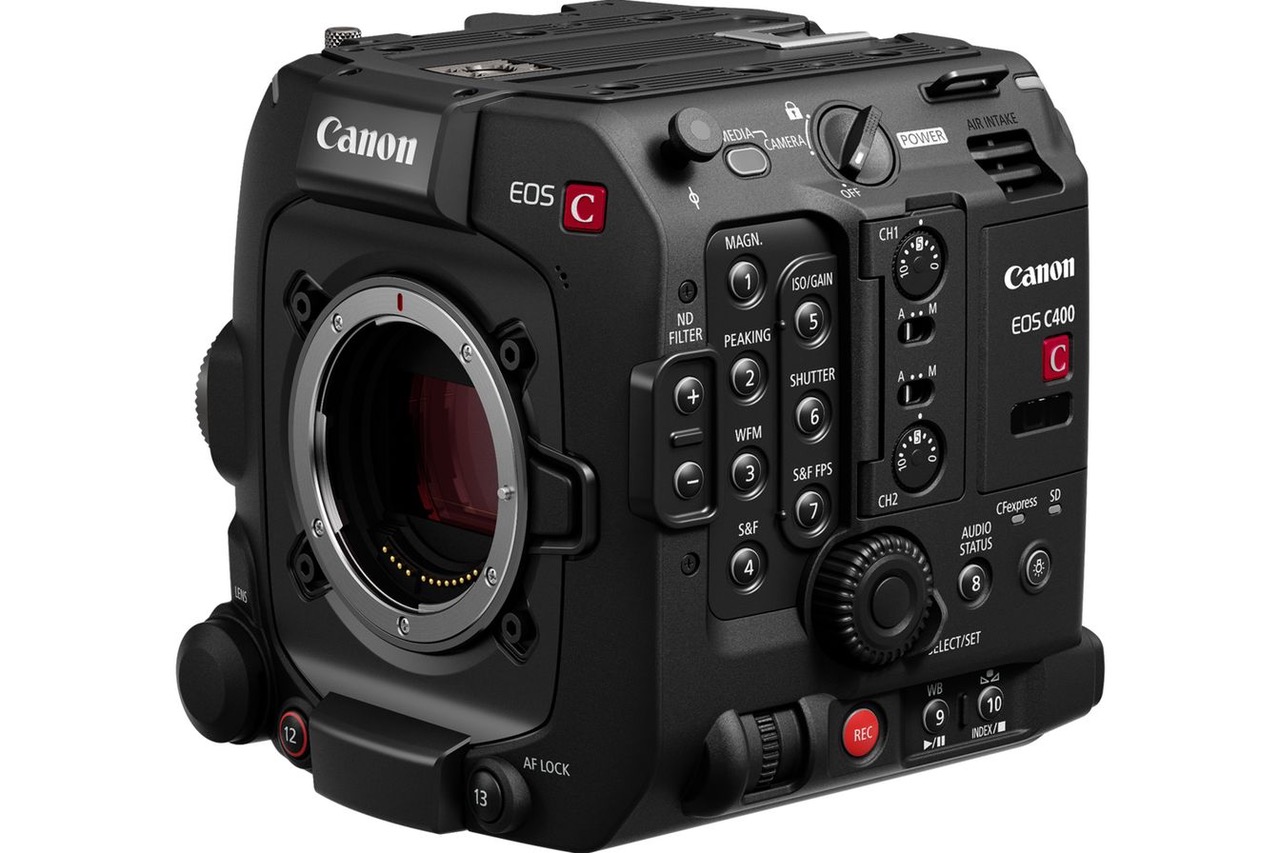
Notably, both C80 and C400 introduce a triple native base ISO of 800/3200/12,800. Both feature Canon’s superb Dual Pixel AF II (Canon pioneered phase-detection autofocus) and an internal filter wheel with five ND settings for up to 10 stops. Image stabilization is electronic only (no IBIS). An optional Canon RF-to-PL lens mount adapter can transmit Cooke/i lens metadata.
The C400 internally records up to 6K/60p using Canon’s 12-Bit Cinema RAW Light (the C80 taps out at 6K/29.97p). Both can record DCI 4K (4096 x 2160) up to 120p using a range of AVC and HEVC codecs. Output connectors for uncompressed DCI 4K include BNC for 12G-SDI, and HDMI.

You might conclude that the C80 and C400 are essentially the same camera, only in two shapes and sizes. This underscores the current situation that when it comes to compact cine cameras, two profiles compete: mirrorless, descended from DSLR still cameras held up to the eye—and boxy, which are blind (sans viewfinder) and covered with buttons, switches, threaded holes for attachments, and only sometimes an LCD. Note that the C80, too, lacks a viewfinder—a serious deficit in my book—although you can clasp a Zacuto Z-Finder onto its flip-out LCD screen. Admittedly, if you fly a C80 on a drone or gimbal, a viewfinder would be just extra baggage.
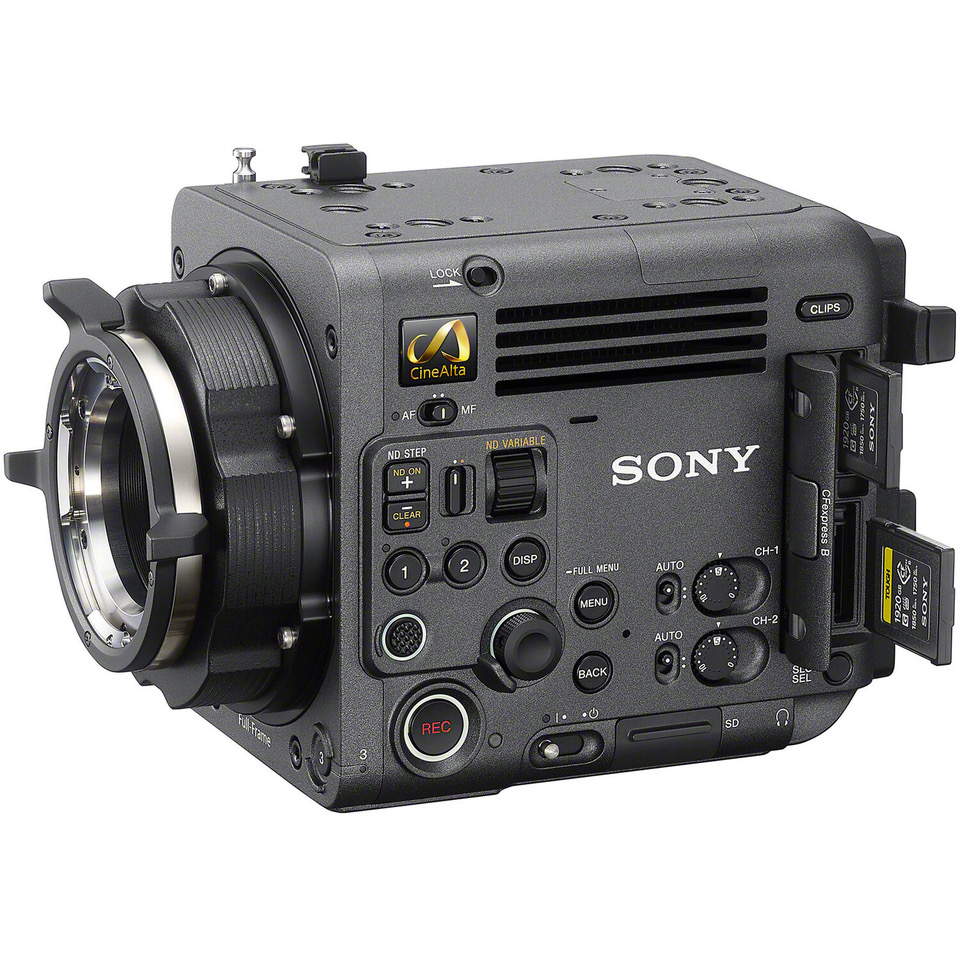
Sony’s mini-Venice, the compact full-frame 8K Burano, arrived this spring. It has been well-accepted, although its $25K price may be too steep for FX9 owners wishing to move up. Internally it can record up to 8.6K/29.97p to a compressed RAW codec that Sony calls X-OCN LT. (Burano is described in more detail in Progress in Small Steps: Camera and Lighting Technology Trends in 2023.) This boxy little camera has been praised for being the first to bring 5-axis stabilization (IBIS) to a PL-mount camera platform, as well as intelligent autofocus when used with autofocus lenses. I find it hard to get excited about any of this, because these features have been available in Sony Alpha cameras like the A7S III for several years, and there are over a dozen E-to-PL mount adapters on the market that will fit any full-frame E-mount camera. Note that the flagship Venice with its built-in E mount fails to support autofocus.
Fujifilm introduced a mirrorless, medium-format GFX 100 II in late 2023, followed promptly this year by a slightly smaller, less expensive version, the GFX 100S II. Both share a large, 8K back-illuminated CMOS sensor that is 43.8mm wide, with a 1.33:1 aspect ratio. That’s an image area 1.7x larger than full-frame!
Large image formats incur focusing challenges because they rely on longer lenses with narrower depth of field. The GFX100S II tackles this issue with a hybrid autofocus system (phase- plus contrast-detection) trained by A.I. to improve subject recognition, much like that of the Lumix GH7. Despite a more massive sensor, the GFX100S II also provides 5-axis image stabilization.
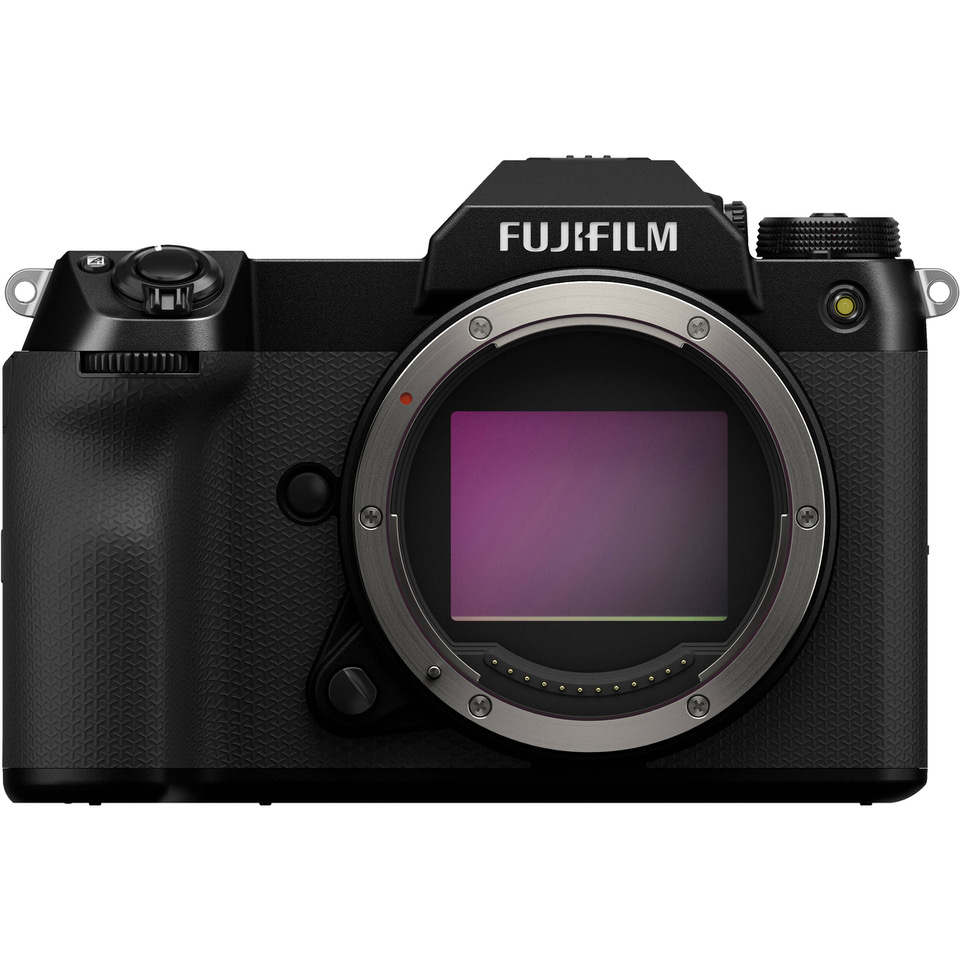
As mirrorless cameras, the GFX 100 II and slighter GFX 100S II both feature a lens mount with a shallow flange focal distance. Fujifilm’s G mount is 26.7mm deep, and like all such mirrorless lens mounts, it easily accommodates a PL-mount adapter for manual-focus PL lenses. However if autofocus is desired, lens choice is limited to Fujifilm GF autofocus lenses designed for these cameras, or to Canon EF autofocus lenses with adequate coverage for the larger sensor, using one of several EF-to-G adapters on the market. Note that Fujifilm’s own GF lenses are made by Fujifilm’s lens subsidiary, Fujinon, an industry heavy-hitter when it comes to superior lens technology.
Impressively, both cameras internally record 4K to a handful of top-tier codecs including 10-bit 4:2:2 ProRes. Using HDMI, they can also output DCI 8K 24p (8192 x 4320) or UHD 8K 29.97p (7680 x 4320) for external 12-bit recording to 4:2:2 ProRes RAW or Blackmagic RAW.
What if Fujifilm were to repackage a GFX medium-format camera into a boxy shape instead? In mid-November, that’s exactly what Fujifilm announced: the GFX Eterna. What Fujifilm calls its “first-ever filmmaking camera” will appear sometime in 2025. From the press release, it looks to be about the size and shape of a Sony FX6. No pricing was announced, although boxy shapes seem to occupy higher price brackets than their mirrorless siblings.
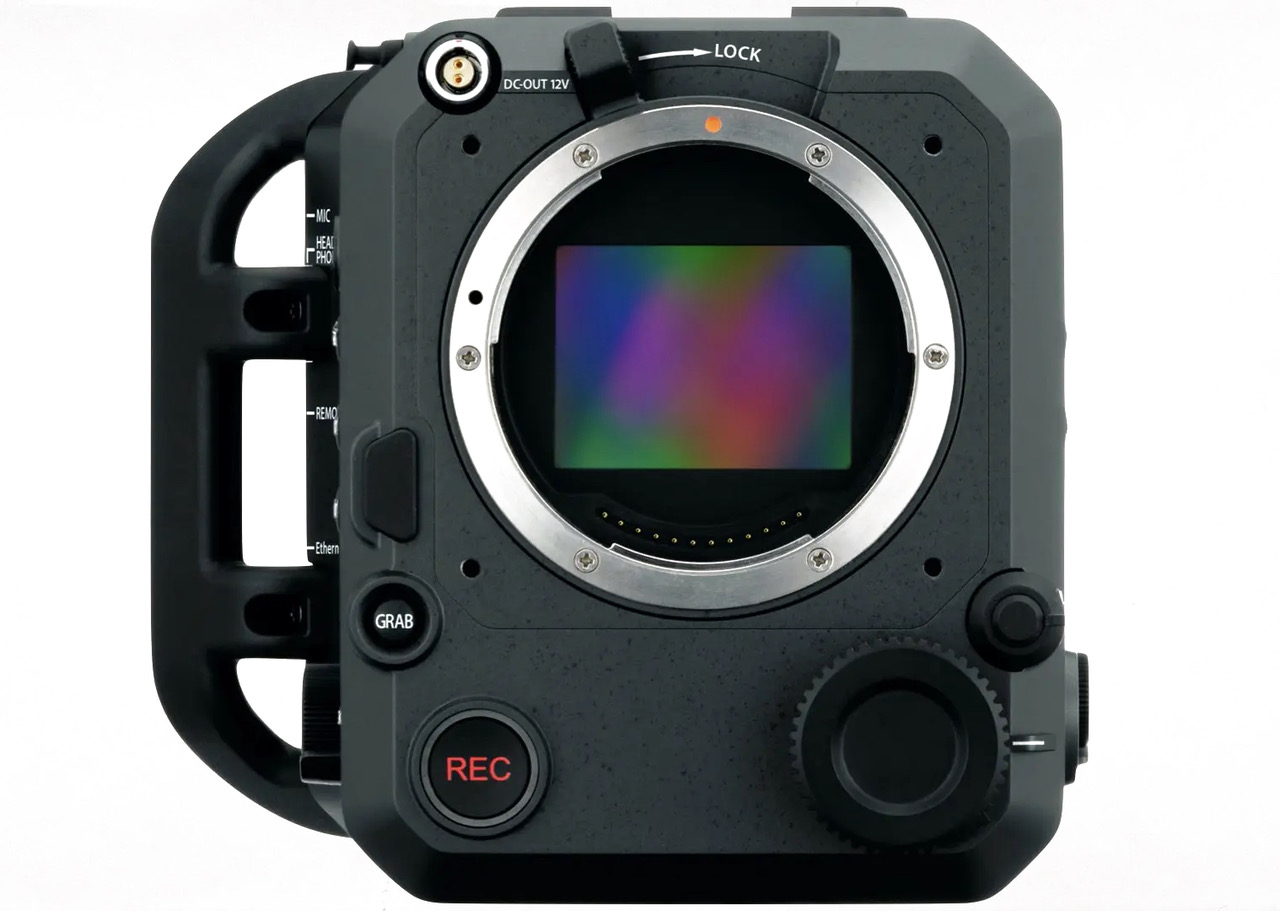
Fujifilm will need to play their cards right, but they may have a hit on their hands. This is anecdotal, but in the same way some documentary camerapersons seem to prefer Canon cine cameras, a lot of veteran cinematographers have a soft spot for the look of Fujifilm, fondly remembered as muted and organic. (Fujifilm ceased manufacturing motion picture film ten years ago, after eight decades.) The lure of shooting “medium format” (although 20% less wide than an ARRI 65 sensor) coupled with a preference for Fujifilm color science might draw in a lot of noted cinematographers, if lens choices can be worked out.
Blackmagic Design made big waves at NAB 2024 with their introduction of two new large-format cameras, nearly identical in appearance on the outside. The first camera, the URSA Cine 12K LF ($15K, body only), contains a full-frame sensor with a 3:2 aspect ratio and a breathtaking pixel count of 12,288 x 8040. The 12K LF captures to RAW only, along with H.264 proxies, which lightens the encoding load. Still, that’s 98 megapixels, four times as many as Sony’s A9 III flagship full-frame still camera! A massive torrent of data, all of which the 12K LF must shunt from sensor to solid-state drive up to 80 times a second.
The inevitable byproduct is a colossal heat build up. At NAB, I spoke to a Blackmagic design engineer who told me that there were 6 to 7 separate cooling systems in the 12K LF body, each exploiting a slightly different technology. But how to store this deluge of data? Aye, there’s the rub. The 12K LF has no external recording mode. The camera’s media slot accepts only a Blackmagic Media Module 8TB, a dedicated cartridge containing a pair of M.2 SSDs. Each Media Module 8TB can capture over four hours of 12K Blackmagic RAW or 20 hours of 4K. You do need a rack-mounted Blackmagic Media Dock to play them back. As an alternative, there’s an adapter module that can host a pair of CFexpress cards, which play back conventionally.
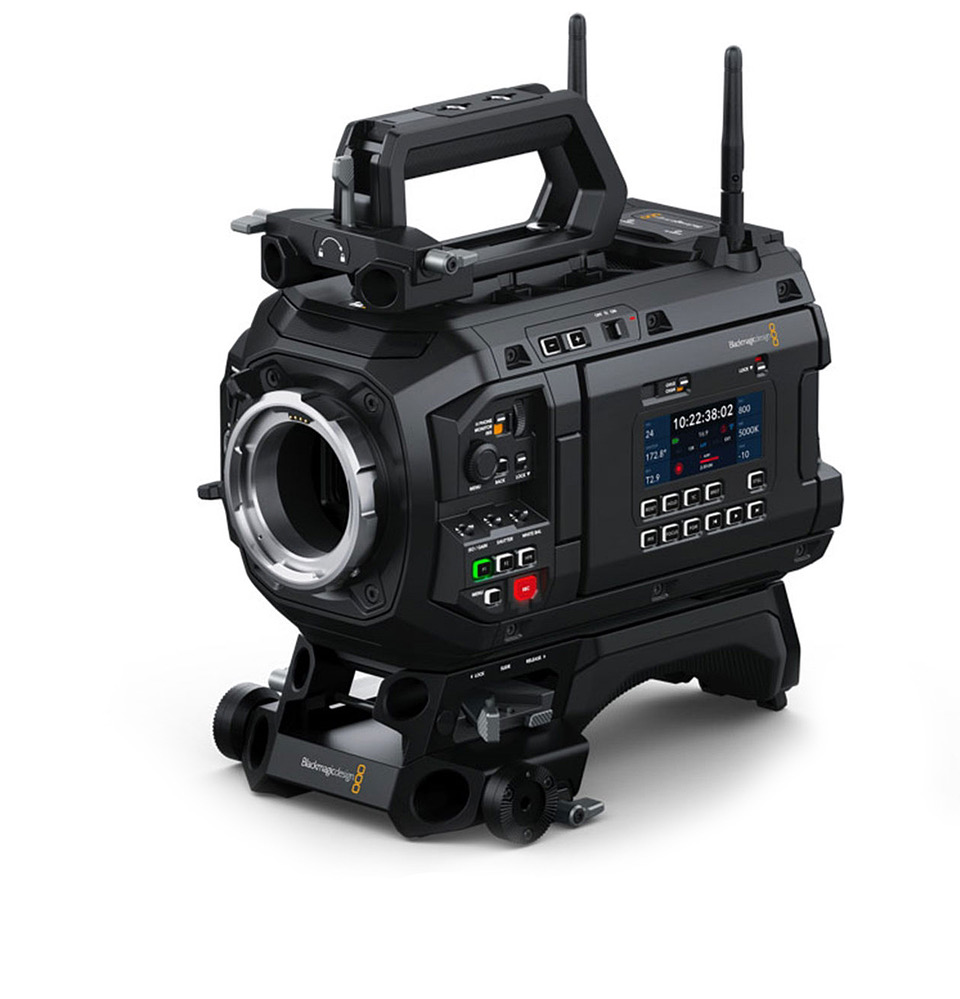
The 12K LF incorporates a built-in filter wheel for up to 6 stops of ND, and there are interchangeable mounts for PL, LPL, and EF. A rave review of 12K LF image quality can be found over at CineD.
Blackmagic’s second large-format camera, the Ursa Cine 17K 65 ($30K, body only), catapults Blackmagic into the rarefied realm of 65mm film incarnations, or as one NAB wit quipped, “IMAX for the masses.” It contains a 65mm format sensor (17,520 pixels of horizontal resolution, 50.8 mm wide, 2.2:1 aspect ratio) in a camera system that specs out identically to the 12K LF except that there’s no built-in ND filter wheel (filters necessary for 65mm sensor would be too large for this). Blackmagic says the 17K 65 will be available early 2025.
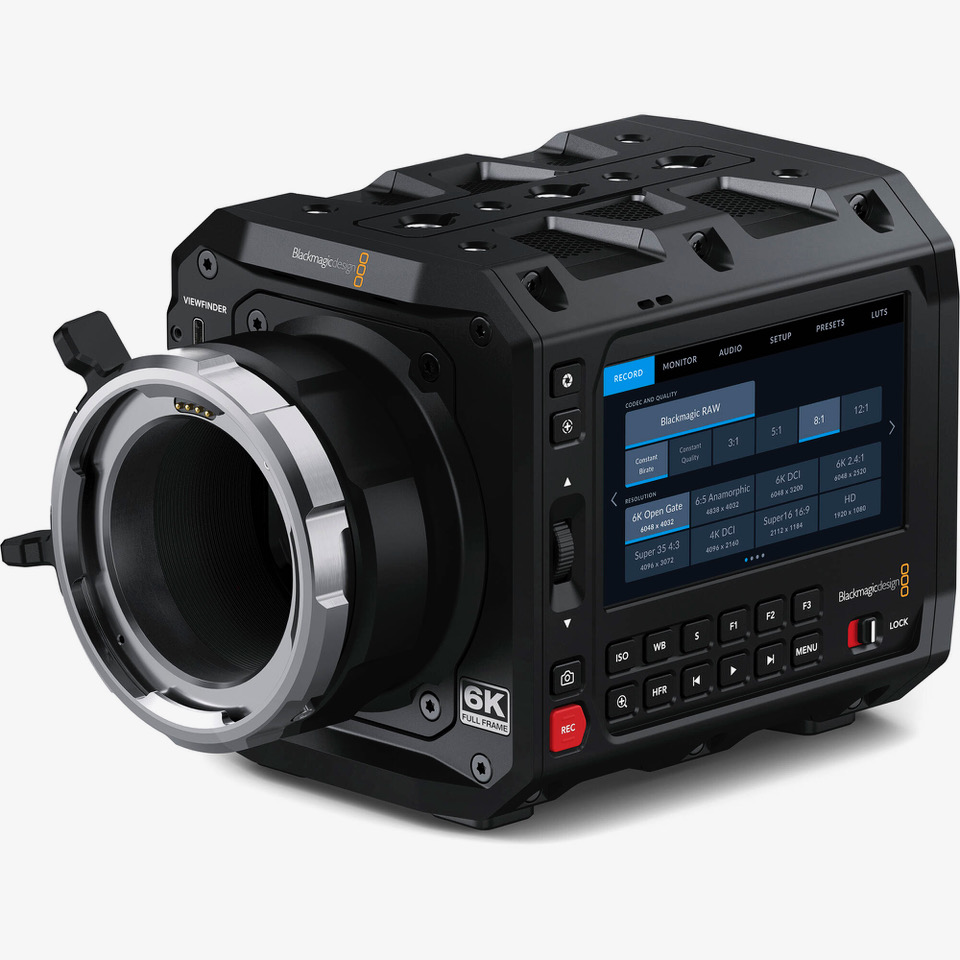
Wait, there’s more. At NAB Blackmagic also premiered their full-frame PYXIS 6K ($2,995, body only), a petite boxy camera similar in size to Sony’s FX6. (I have been detailing Blackmagic’s modest prices because this sets them apart from the competition.) Internally, PYXIS 6K captures 12-bit Blackmagic RAW to CFexpress Type B cards only; there’s also 12G-SDI for external recording. Initially only L-mount will be offered, but Blackmagic plans to release PL and EF mount versions of PYXIS 6K. Note that each flavor of lens mount will mean a different price tag for the camera.
A fourth new Blackmagic camera was sneak-peeked at April’s NAB. In December Blackmagic formally announced Ursa Cine Immersive, a $30K camera designed with Apple to be the first professional camera for shooting Apple Immersive Video for Apple Vision Pro. Features of this 3D stereoscopic rig include matched lenses for a wide 180° field-of-view, dual 8K sensors (8K for each eye), 8K capture to Blackmagic RAW up to 90 frames/second, and spatial audio support. Blackmagic says Ursa Cine Immersive will be available early 2025, and that a future update to DaVinci Resolve Studio will support the monitoring and editing of Apple Immersive Video.
This year RED introduced impressive global-shutter upgrades to both of its 8K VV (VistaVision, or full-frame) cameras, the V-Raptor and larger V-Raptor XL, as well as to its more affordable 6K S35 Komodo. To distinguish these upgraded models from non-global shutter models, RED appended an “[X]” to the name of each upgraded model , e.g., V-Raptor [X]. Evidently Nikon’s acquisition of RED has yet to simplify RED’s nomenclature or its penchant for model proliferation, inasmuch as non-[X] 8K VV models remain available.
Why Nikon?, you ask. April saw the dismissal of RED’s lawsuit against Nikon for incorporating internal RAW recording into a Nikon camera, which litigious RED has long claimed an exclusive patent for. This legal outcome would seem connected to the fire sale price Nikon paid for RED. Nikon is a century-old optics firm, large and diversified, at one time synonymous with premium 35mm SLRs the world over. Its Imaging Products Division remains its most profitable division. RED, by contrast, produces one product. Its reputation hangs on its color science and brash style.
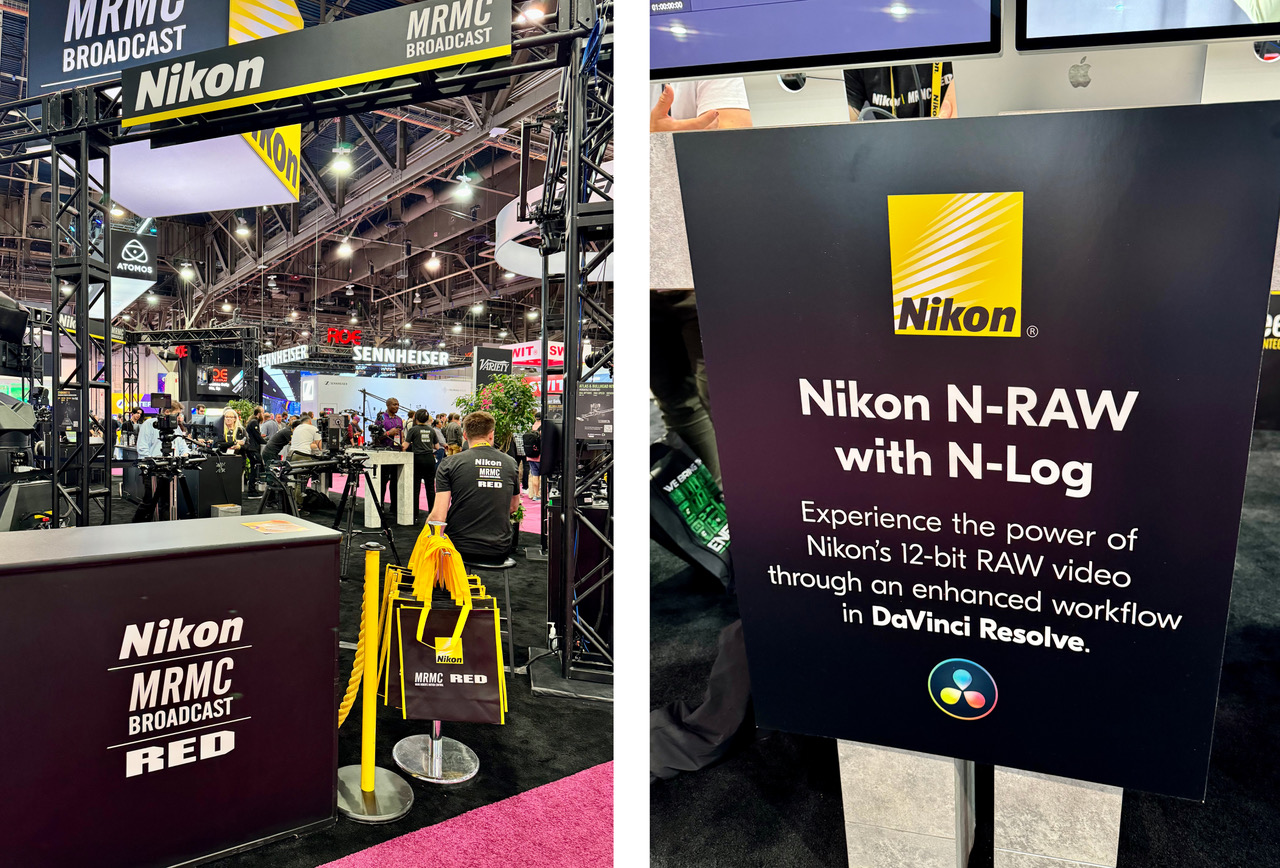
Perhaps not a marriage made in Japanese corporate heaven, but when it comes to digital cinema, Nikon urgently needs a leg up. To date, the only digital cinema product announced by Nikon is an upcoming Nikkor Z 28-135mm f/4 powered video zoom for their mirrorless Z mount cameras, which looks remarkably similar to Sony’s 28-135 f/4 powered E-mount zoom from a decade ago (still in production). On the other hand, there are ace designers and technologists at both companies. Let’s hope this odd coupling surprises us all in the end.
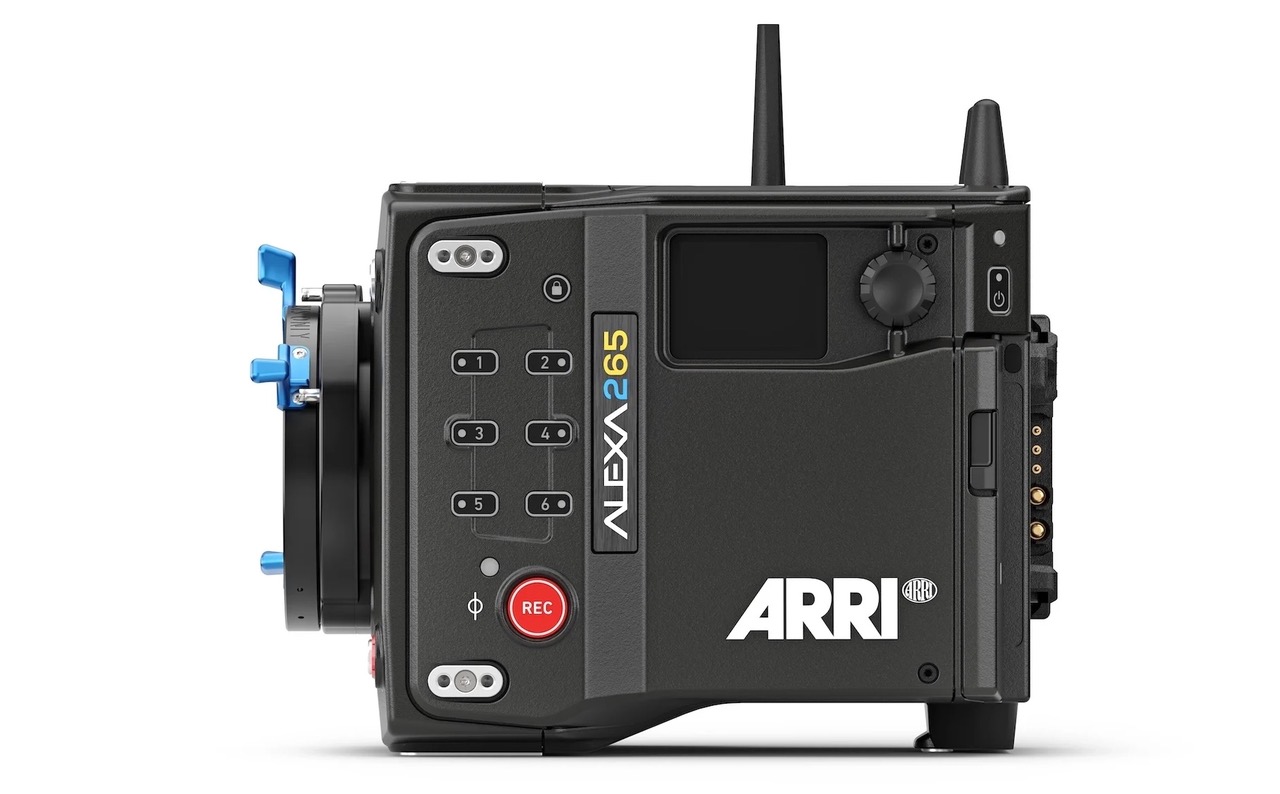
Not to be outdone in 2024, in early December ARRI startled the industry by announcing Alexa 265, a boxy camera about the size and weight of an Alexa Mini, despite a huge ARRI 65mm sensor mounted inside. In other words, it could be mistaken for an Alexa 35. Per ARRI, the Alexa 265’s 65mm format sensor (6.5K, 54.12 mm wide, 2.1:1 aspect ratio) has been “revised” to improve dynamic range and low-light performance compared to that found in the much larger, heftier Alexa 65. Notable is a novel filter system that accepts filter trays encased in a protective cartridge that slides in front of the sensor. Not only NDs but creative filters are enabled. An embedded chip in the filter tray identifies the filter to the camera, which transmits this information as metadata. The Alexa 265 will be available for rental only in early 2025.
In 2024, another direction in digital cinema cameras grew apparent, not in technology but application. It’s been reported that in 2023, 93 of the 100 most-watched television broadcasts in America were National Football League games. So it’s not surprising that some digital cinema camera lines are evolving toward live broadcasting of concerts and sporting events, as well as live studio production. After all, if digital cine cameras and lenses provide a superior look compared to broadcast video cameras, well, who wouldn’t want this for their premium broadcasts?
At the NAB show in April three years ago, Sony initiated this trend with a cine-style, global-shutter S35 PL-mount camera adapted for broadcast, the HDC F5500. Last year Panasonic followed suit with a S35 Varicam version of the same thing. This year at NAB it was ARRI’s turn. ARRI, promising both HDR and ARRI’s signature cinematic look, showcased a 4K Alexa 35 Live-Multicam system, complete with an optical fiber adapter and fiber base station capable of supporting cable lengths over a mile. RED (under Nikon management) got in the act, too, unveiling a similar configuration for its V-RAPTOR series of cameras, including a new RED Cine-Broadcast Module with an optical fiber adapter that also connects to a base station.
There may be another factor driving camera manufacturers’ sudden interest in live broadcasting. High-end digital cinema cameras are not mass-market products. They are terribly expensive to develop and costly to purchase, and so they tend to become rental items. At any one time, moreover, there are only so many rental companies making so many large purchases, based on demand. Put another way, the market for new high-end cameras saturates easily. Where else to sell the latest high-end cameras in an ailing industry that has weathered a pandemic, a writer’s strike, and now a production pullback by streamers?
LENSES
As sensors have gotten bigger, new lens lines with larger image circles have launched from traditional cine lens firms like Cooke, Zeiss, ARRI, and Angenieux. Generally these latest designs are larger, heavier, and ever more expensive. At the same time, Japanese companies like Sony and Canon, pioneers in sensors with phase-detection autofocus, have developed superb lines of full-frame autofocus lenses, which retail for a fraction of the cost of cine primes. Can there be no middle ground?
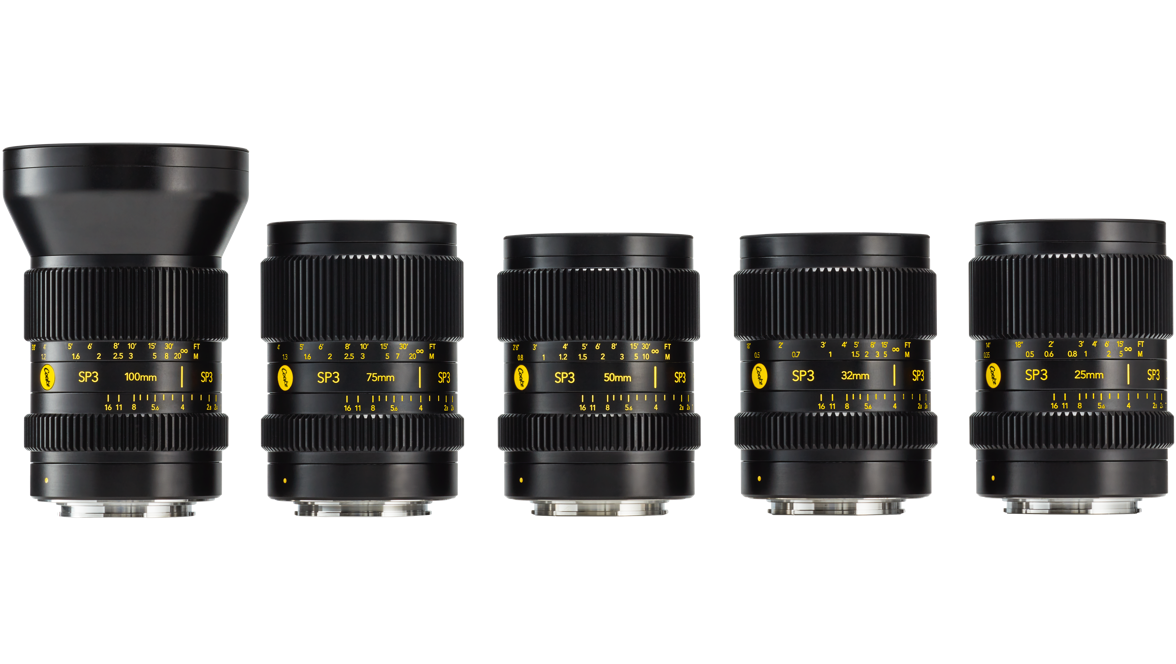
This year Zeiss announced a new low-cost “Nano” line of fast cine primes, all T 1.5, for full-frame mirrorless cameras, initially available for Sony’s E-mount. These are manual-focus lenses, six focal lengths so far, with matched diameters (95mm) and long 280° focus rotations. They are capable of transmitting metadata to the camera. For those who prefer “The Cooke Look,” Cooke launched a similar “SP3” low-cost line of primes for mirrorless full-frame cameras, also initially for E-mount, now including six focal lengths. These are smaller lenses, T 2.4, with 64mm diameters (the 100mm has an 82mm diameter) and a 160° focus throw, echoing the compact size of classic Cooke Speed Panchros. Cooke says they actually are based on the Speed Panchro design, a mainstay of 1930s Hollywood, although Speed Panchos never covered full-frame or incorporated modern glass and coatings, so some design updating is involved.
2024 also continued to rain new inexpensive cine lens lines and one-offs from China, from companies like Dulens, DZOFilm, Kipon, Nisi, even Viltrox. Lest country of origin be misconstrued as a knock against these lenses, bear in mind that China not only landed a probe on the far side of the moon in 2024, they returned rock samples to Earth. Chinese technology is world-class now; we wouldn’t have drones, stabilizers, modern batteries, or cheap wireless video transmission systems otherwise.
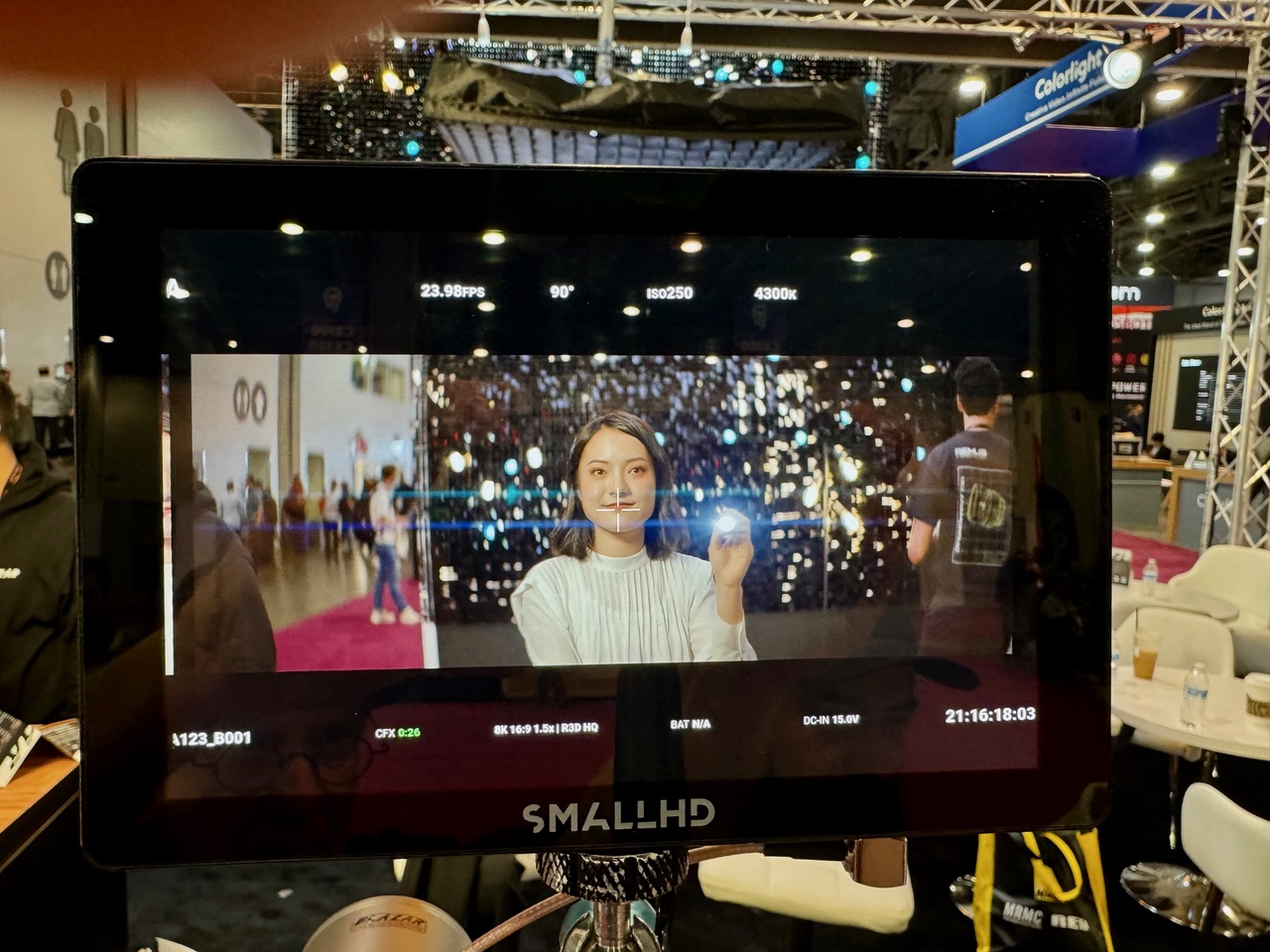
At April’s NAB, the Chinese lens company Blazar proudly demonstrated blue and cyan anamorphic streaks from their new 35mm 1.5x anamorphic lens. A feature, not a bug! Some Blazar anamorphic lenses are tuned to deliver silver streaks, others, amber. These are sub-$1,000 lenses, available in both PL and E-mount.
I came across multiple Chinese-made adapters to adapt PL mounts to mirrorless cameras (Sony E, Leica/Panasonic L, Canon RF, Nikon Z). Several adapters featured slots to add drop-in filters. Kipon showed a PL-to-LPL mount adapter that incorporates a rear 1.5x anamorphic element, to automatically convert all of your conventional spherical PL lenses to widescreen!
LIGHTING
LED lighting tech for motion pictures equally continued to evolve in 2024. The field is much too large to cover in a few brief notes, but several developments did stand out.
In late 2023, ARRI announced SkyPanel X, an entirely new version of its nine-year-old workhorse softlight, SkyPanel. I first saw one of these up close at NAB. How our expectations of LED lighting have changed! The RGBW (W = white) LEDs in the original color-tuneable SkyPanel were state-of-the-art in 2015. Today, however, with so many more types of cameras in use, each with marginally different spectral sensitivities (or insensitivities), we want the full equivalent of full-spectrum white light from LEDs, not a working approximation. We want skin tones that appear as rich and natural under LEDs as they do under tungsten halogen or daylight. SkyPanel X attains its full-spectrum output by combining RGB LEDs with amber, cyan, and lime LEDs, a mixture known as RGBACL.
Further, SkyPanel X can divide its surface into eight square zones, each of which can be separately color-controlled. Gang together three Sky Panel Xs and you have a powerful image-based lighting (IBL) source.
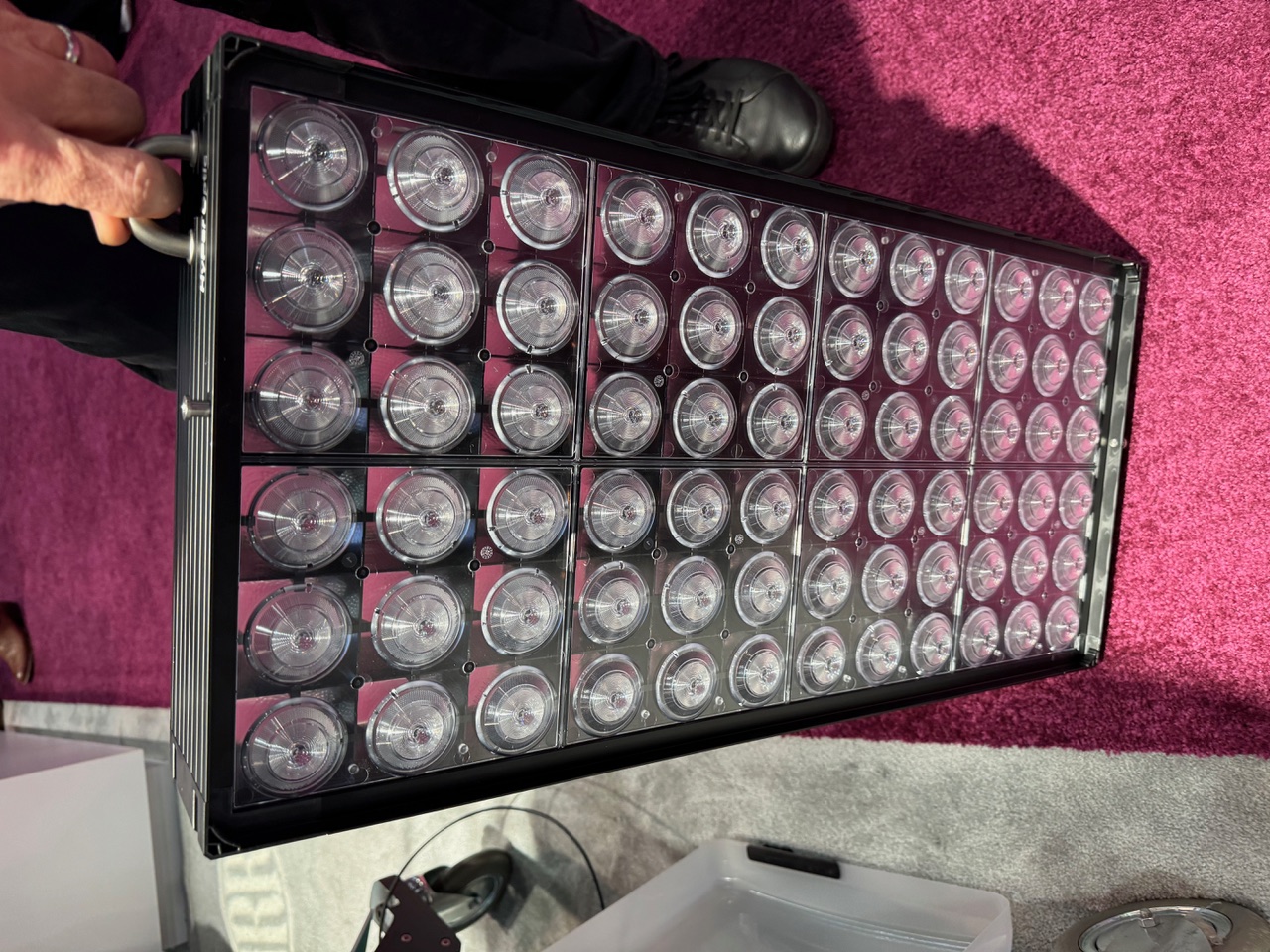
SkyPanel X is particularly cutting-edge in its use of modular light modifiers. I was fascinated by the HyPer Optic, a clear panel gridded with 72 small fresnel lenses that converts a SkyPanel X into a hard light with a long circular throw. You have to see it to appreciate how effective it is. In fact, the best way to understand the punch and versatility of these new lights is to ask ARRI or a rental house for a demonstration.
In September, Chinese lighting firm Aputure introduced Storm 1200x Bi-Color, a remarkable new light with a singular pedigree. In the fall of 2023, Aputure, known for inexpensive lights favored by indie producers, acquired another Chinese lighting manufacturer, Prolycht, which in a few short years had established itself at the forefront of full-spectrum color accuracy. Its focusable lights housed a pioneering RGBACL light engine that preserved color accuracy at all dimming levels, even down to 1%. (Full disclosure: I used a pair of Prolycht Orion 675s on a feature in 2021 to simulate moonlight.)
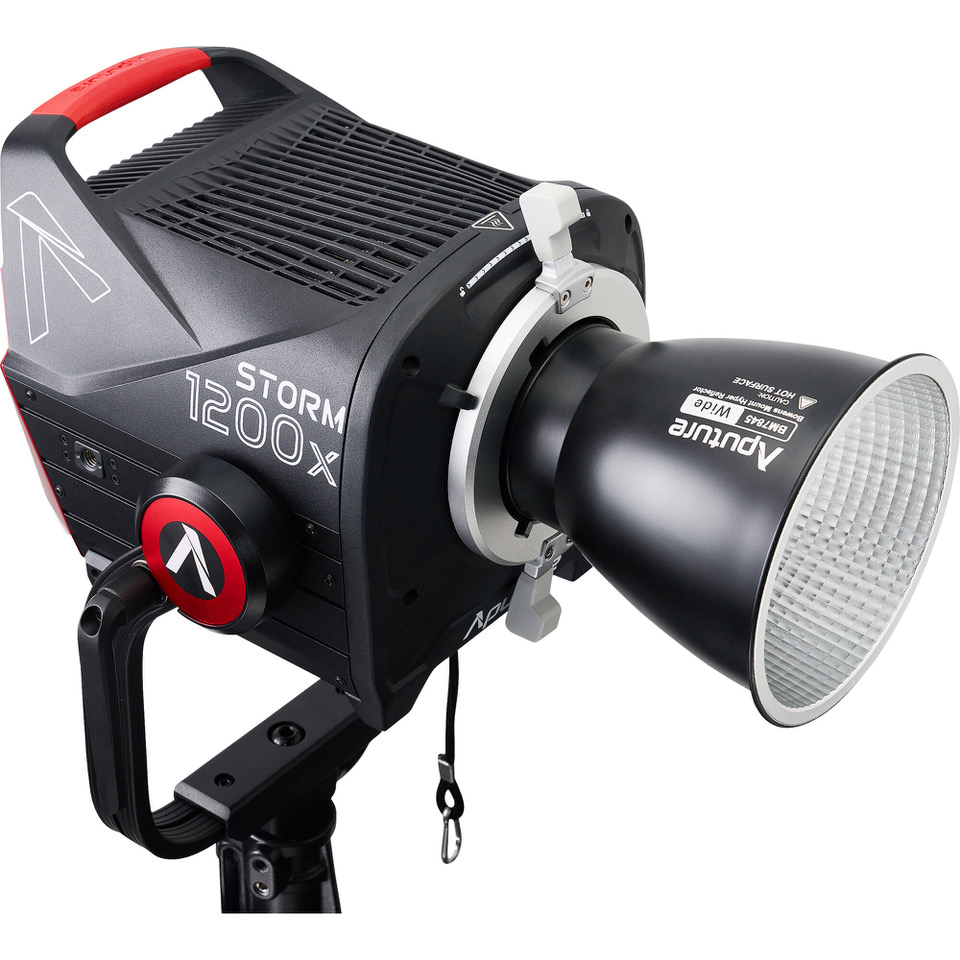
The Storm 1200x Bi-Color would seem to be the first offspring of this coupling. Remarkably however, it introduces an even newer white-light color science based on a blue, lime, amber, indigo, and red LED chipset that Aputure calls BLAIR. This mix of LED hues is not intended to produce party colors; the goal is a rich, full-spectrum output for a white-light color-temperature range of 3200°K-5600°K, with green/magenta control for fine-tuning to ensure precise color accuracy along the entire dimming range. Moreover, when used with the included 45° reflector, the Storm 1200x is bright enough to replace an ARRI M-18 HMI while drawing only 1200 watts. You can plug a Storm 1200x into a standard 15-amp circuit at home. Or with its IP65 weather rating, place it outside a window during a light rain.
A good way to visually appreciate why we need full-spectrum lights is to watch an entertaining presentation by color scientist Tim Kang of Quasar Science (now Principal Engineer, Imaging Applications at Aputure). He demonstrates why RGB LEDs by themselves can never be trusted as white light. You’ll gain an appreciation for how different cameras (and people) can see color differently.
PORTABLE POWER
Lastly, 2024 saw a proliferation in new solutions to location power, and they all took the form of battery systems on wheels. Called power stations, power boxes, block batteries, even solid-state generators, they tend to be the size of a small dishwasher or large hard case, sometimes surrounded by a cage for handing. They have multiple outlets, including 120V AC, 12V DC, 48V DC and USB. Unfamiliar manufacturers include Shape (well, they make camera accessories), Makinex, Patona, Obsidian, New Use Energy (NUE), and Salt-E Dog. Salt-E Dog’s power station uses safe, non-combustible sodium-nickel battery technology instead of lithium-ion and is capable of 6,000 watts of continuous output. Altogether it delivers 9 kWh, which is equivalent to running a single 1,000-watt light for 9 hours. Or one Storm 1200x for 7.5 hours.
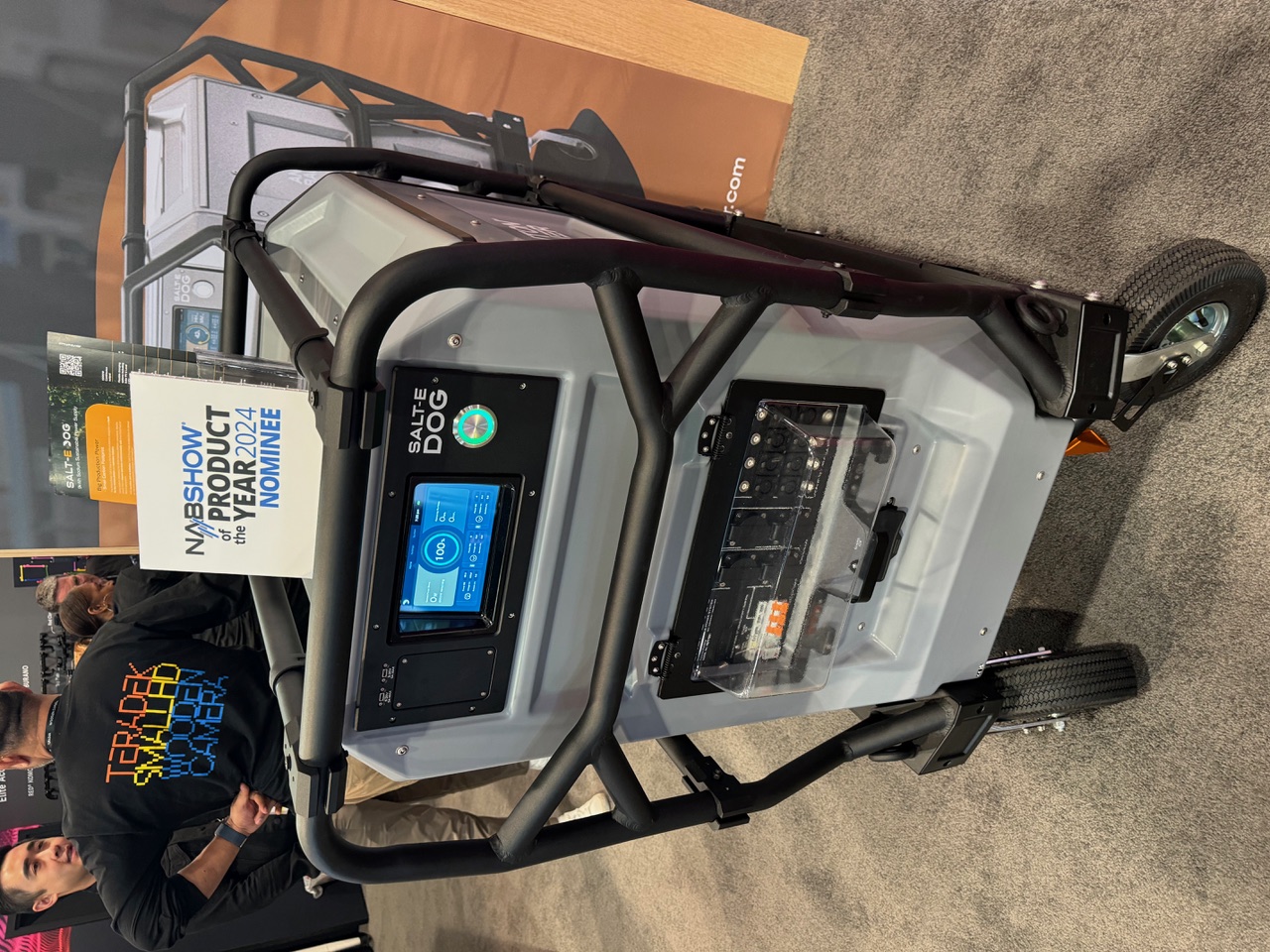
Portable battery systems for production, needless to say, are silent and don’t emit exhaust fumes. They can power or recharge anything, including cameras and video villages. This suggests many new possibilities. Portable battery power is a field that I expect to grow in the coming years, especially as non-combustible solid-state batteries, which store a greater energy density than lithium-ion and charge faster, come online.
At NAB, battery systems from Shape and NUE even showed solar-cell systems for on-location recharging of power stations. A good way for exterior film sets to reduce their carbon footprint!
NAB 2024 show floor photos by David Leitner.
David Leitner is a director, producer, and DP, and a contributing editor to Filmmaker. He is a Fellow of the Society of Motion Picture and Television Engineers (SMPTE) and board member of IndieCollect, a non-profit that rescues and restores independent films made in the pre-digital era.
